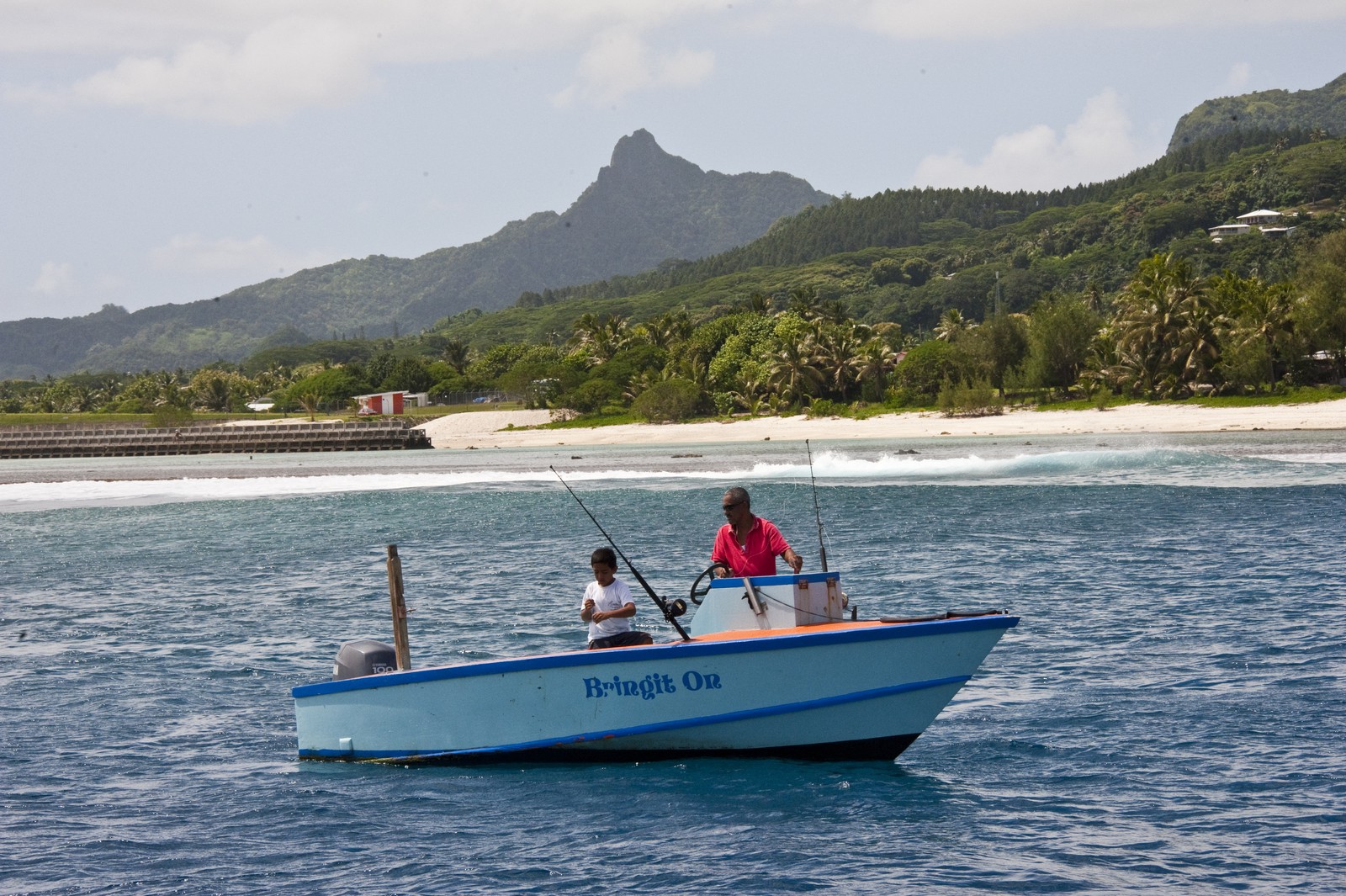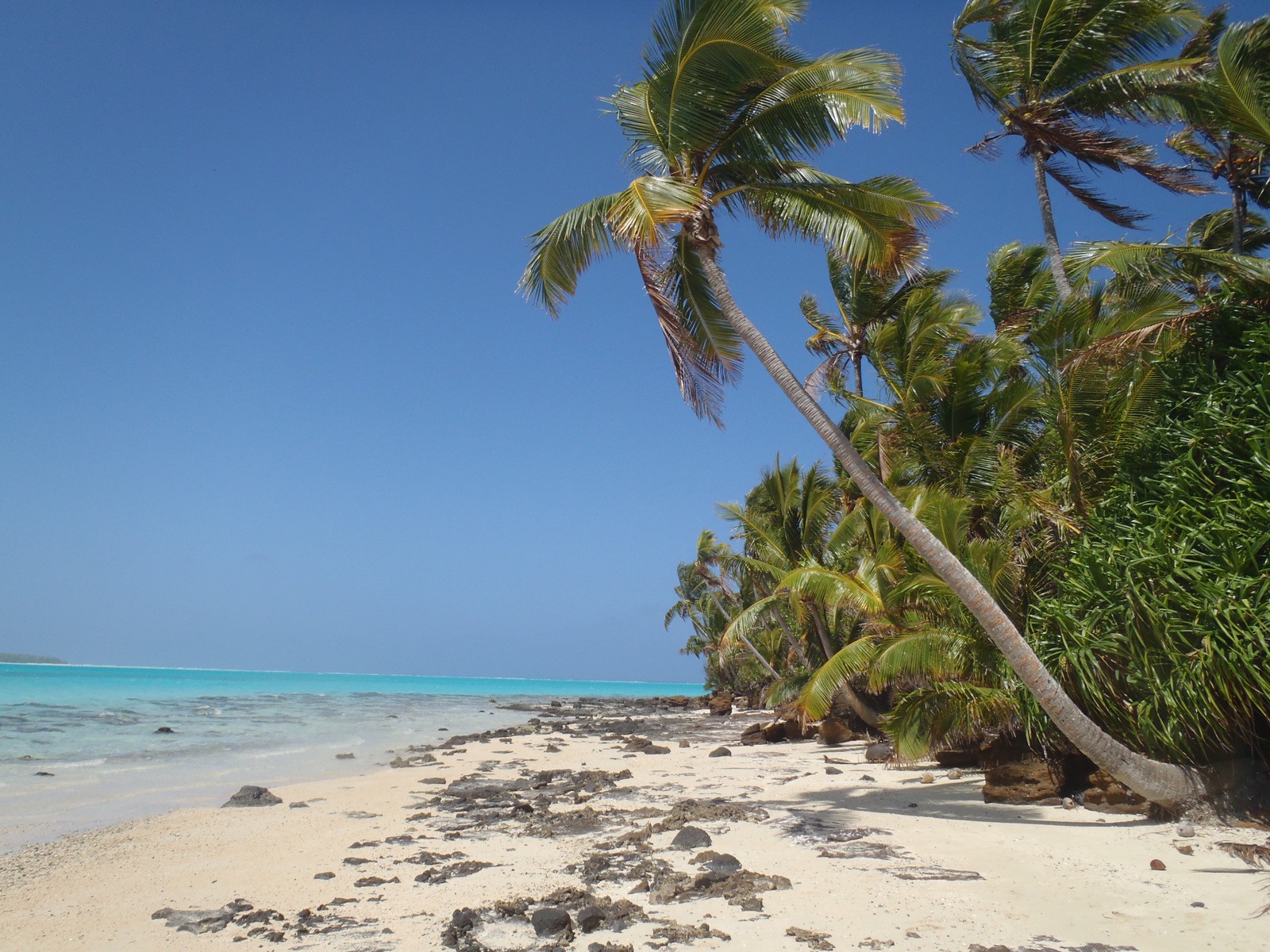
Kevin Iro grew up in Auckland, New Zealand, but once he was in grade school, his family began vacationing in the Cook Islands, where he could fish the turquoise Pacific. “We could catch as many as we wanted, basically,” he says. As he grew older, however, the catch seemed smaller and smaller. Now, he lives on the Cooks and sometimes an islander may not nab a single fish in a day, he says. Depleted fish stocks — due to foreign commercial fishing operations, locals believe — are just one of the changes the islands have seen in recent decades. “If you go out to the atolls and you speak to people there, you’ll see erosion and all the things that come with climate change,” he says.
The Cook Islands are a series of 15 atolls and low-lying islands located 2,000 miles northwest of New Zealand in a part of the ocean that makes people the world over think “paradise.” The largest Cook island, Rarotonga, is about 26 square miles. Like other small South Pacific nations, the Cooks are among the most vulnerable locations on Earth to climate change: Isolation tends to foster ecosystem fragility. But the islanders have a plan for fighting back.

(Photo: Conservation International/Russell A. Mittermeier)
In 2009, Iro, a former professional rugby player and member of the Cooks’ tourism board, proposed the country establish a marine park. “Not knowing anything about ocean conservation,” he says, “I thought that we should start protecting our ocean.” The proposal is now with Prime Minister Henry Puna, says Elizabeth Wright-Koteka, Puna’s chief of staff. The government hopes to pass it by the end of April. The park is to be named Marae Moana, a phrase in the Maori language that loosely translates to “a sacred ocean,” Iro says.
“They’re not waiting around for the world to reduce their use of fossil fuels.”
When signed into law, Marae Moana will cover everything the Cook Islands legally controls, about 700,000 square miles of ocean. That doesn’t mean the entire area will be closed to fishermen. Instead, the Cook Islands government will specify what parts of the map will be set aside for conservation, tourism, commercial fishing, and deep-sea mining. (Nobody is mining offshore of the Cooks yet, but some companies are surveying the area’s potential.) How much each interest gets is still under intense debate.
Still, the plan signals a commitment to conservation in the Cooks, and is part of a trend of protection throughout the South Pacific. Palau established a national marine sanctuary just last October; New Caledonia started its Natural Park of the Coral Sea in 2014; and Kiribati, the Phoenix Islands Protected Area, in 2008. “Pacific island nations have largely been innovators of large-scale marine protected areas in the last decade,” says Sue Taei, a project manager with Conservation International, an environmental organization that has consulted on the Marae Moana policy.
The way Taei sees it, the parks are a way for small islands to mitigate some of the effects of global warming, which often harms them the most, even though they are among the world’s smallest emitters of greenhouse gases. A marine protected area can’t undo the damage of rising sea temperatures and acidification, which bleaches coral, but it can shield reefs from further stressors such as fishing, which, in turn, gives them a better chance at resisting or recovering from bleaching. “For nations today, what can they do? They can create these things,” Taei says. “They’re not waiting around for the world to reduce their use of fossil fuels.”

(Photo: Conservation International/Ginny Farmer)
Under debate in the Cook Islands is exactly how far away from shore the conservation area will extend. Traditional chiefs in the islands are gunning for 100 nautical miles, in which canoeing and small-scale fishing, but not commercial fishing, would be allowed, says Jacqueline Evans, a project manager for the Te Ipukarea Society, a Cook Islands-based environmental group. The government’s Ministry of Marine Resources wants only the first 24 nautical miles off shore protected. “The 100 nautical mile proposal would significantly reduce the size of fishing grounds to the extent that it would effectively shut down the fishery,” Secretary of Marine Resources Ben Ponia writes in an email. Plus, the ministry thinks protecting such a large area isn’t needed. “The Ministry is seeking to adopt a smarter ‘catch-based approach’ using a quota system to manage and conserve the tuna in our exclusive economic zone,” Ponia writes.
“Sometimes people from large countries come and say, ‘It must be so easy to get things done here,’ but actually, somehow, it seems to complicate things further.”
You might think that compromises in a smaller country with fewer folks would be easier, but that’s not necessarily the case in the Cooks. “Sometimes people from large countries come and say, ‘It must be so easy to get things done here,’ but actually, somehow, it seems to complicate things further,” Evans says. “Somehow the politics are so much more passionate and intense.”
The people living on the Cooks are generally for more protection, according to Evans, Iro, and Wright-Koteka. Perhaps that’s in part because the commercial fishing industry doesn’t directly employ many locals. The vast majority of operators are foreign fleets, which pay government licensing fees. Tourism, on the other hand, employs locals and depends on a healthy ocean to draw sightseers.
Conservation isn’t new to the Cook Islands Maori. The culture has a long tradition of raui, which are temporary closures of a section of shore, declared by a chief, that allow fish populations there to recover. Chiefs have already repurposed raui to indefinitely protect beaches that are popular with tourists, to ensure they’re stocked with the sea life visitors travel to see. Extending the raui concept to a marine park is easy for folks to understand, Iro says. The island lifestyle—depending on locally caught fish and never being more than a few miles from the ocean — also helps. “Living so close to the natural environment and depending on it for food and for, I guess, your whole way of life,” Evans says, “it makes you care a lot more.





